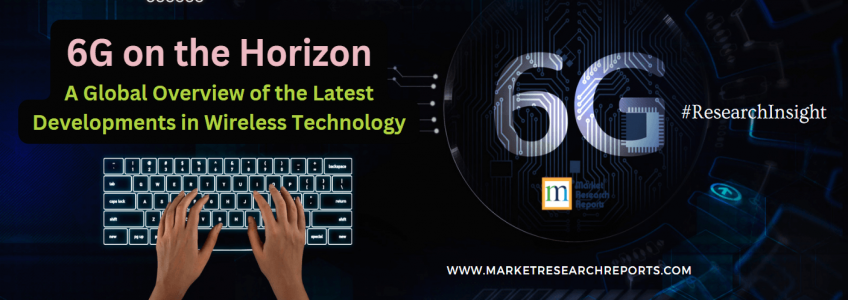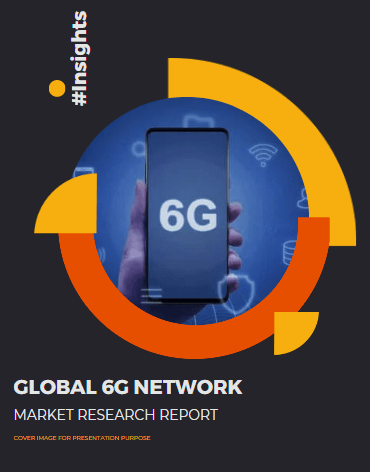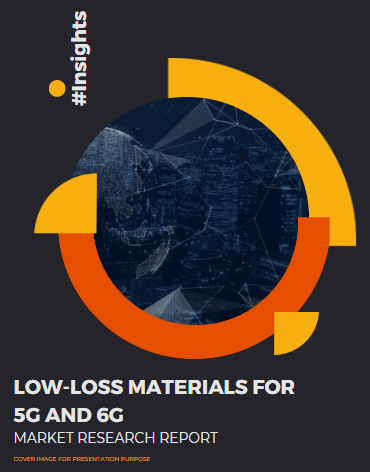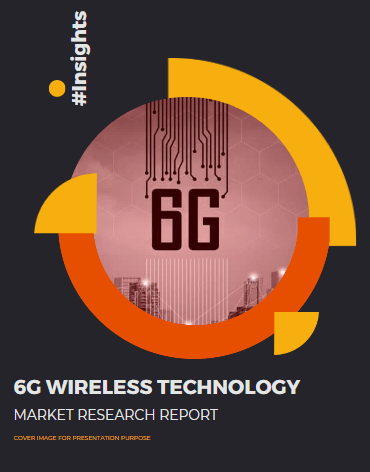6G on the Horizon: A Global Overview of the Latest Developments in Wireless Technology

The evolution of mobile networks has seen tremendous growth over the past decade. The introduction of 5G technology marked a significant milestone in mobile connectivity, offering faster data speeds and lower latency. However, the latest development in mobile networks is the 6G technology, which is expected to bring even more transformative changes to the industry.
6G technology is predicted to provide even faster data speeds, lower latency, higher bandwidth, and more reliable connections than 5G. This new technology will enable new use cases such as holographic communication and real-time virtual reality. Although the 6G technology market is still in its early stages, with NTT Docomo announcing 2030 as the launch year for 6G, the market is currently focused on developing 5G spectrums and transitioning from 4G to 5G.
6G technology has the potential to revolutionize various industries and technologies. Some potential use cases for 6G technology include industry 4.0, augmented reality, autonomous transportation, eHealth, network-enabled robotics and autonomous systems, multisensory extended reality, distributed sensing and communications, personalized user experiences, and advancements in technology such as virtual reality, augmented reality, metaverse, and artificial intelligence.
6G Market Research Report
The report covers over 15 companies, such as Nokia, Samsung Electronics, Huawei, Ericsson, Cisco, Telnyx, Apple, Google, and ZTE, among others.
The report can be tailored to specific requirements as well, providing you with greater flexibility.
To achieve these use cases, 6G networks will need to harness leading-edge technologies such as artificial intelligence, machine learning, cognitive networks, post-quantum cryptography, and IoT-based automation. With these advancements, 6G technology has the potential to become a driving force for innovation and economic growth and a catalyst for advancements in various industries.
1 . Major Differences between 5G and 6G
| 5G Technology | 6G Technology | |
|---|---|---|
| Frequencies used: | Sub-6 GHz and above 24.25 GHz | 95 GHz to 3 THz |
| Speed | Faster than 4G LTE | Faster than 5G |
| Spectrum usage: | C-band, Super Data Layer, Coverage Area | 30 to 300 GHz millimeter waves up to 3000 GHz radiation |
| Intelligence built: | Machine learning and AI | AI and advanced machine learning |
| Goal | Faster speeds, low latency, and improved connectivity | Wisdom, Deep connectivity, Holographic connectivity, and Ubiquitous connectivity |
| Network Capability | Accommodates different types of networks | Aggregates different types of networks dynamically |
| Bandwidth capacity | High, but limited compared to 6G | Greater than 5G, allowing for more users and data-intensive applications |
| Deployment | Already being rolled out globally | Not expected until at least 2030 |
| Infrastructure | Requires significant upgrades to existing infrastructure, including new cell towers and network equipment | Will require even more significant upgrades to infrastructure, including more small cell sites and advanced network architecture |
| Latency | Expected to be around one millisecond | Expected to be less than one millisecond |
| Security | Improved security features compared to previous generations, including improved encryption and better protection against cyberattacks | Will require even stronger security measures due to the increasing number of connected devices and potential vulnerabilities |
| Use cases | Improved mobile broadband, smart cities, autonomous vehicles, and IoT devices | Advanced AR/VR, immersive communications, and intelligent automation |
| Energy efficiency | More energy-efficient than 4G but still requires significant power consumption | Will need to be even more energy-efficient than 5G due to the higher bandwidth capacity and an increasing number of connected devices |
| Global standards | 5G has been standardized by international organizations such as 3GPP and ITU | Standards for 6G are still being developed and will likely be standardized closer to the deployment timeframe |
| Market size | 5G is expected to reach a market size of over USD 600 billion by 2026 | 6G is expected to have a market size of over USD 1 trillion by 2030 |
2 . Country-wise Development of 6G Technology
Several companies and organizations are currently involved in developing 6G technology for wireless communication. In Europe, the Hexa-X research project, led by Ericsson and Nokia, aims to advance 6G research and create standardized frameworks for optimal user experiences. The IEEE SA is also contributing to 6G development by providing guidelines and solutions. The US and EU share common interests in collaborating to achieve an open, fair, and common 6G standardization.
Meanwhile, the Singapore University of Technology and Design has established the country's first lab dedicated to developing 6G technology. With ongoing developments in the field, the race to create the next-generation wireless communication technology is well underway.
Let's explore some country-wise past and ongoing developments related to 6G technology below.
3 . India
Preparing for developing 6G technology while 5G is still in its early stages. The Bharat 6G vision document foresees 6G services launched in India by the second or third quarter of 2024, enabling India to move ahead from 5G services in just two years. The mission will be completed in two phases: Phase 1 from 2023-2025 (2 years) and Phase 2 from 2025-2030 (5 years).
4 . South Korea
- South Korea is pursuing an ambitious plan to be the first country to launch 6G networks.
- Announced its plan to launch its 6G network by 2028.
- The Ministry of Science and ICT in South Korea has established a 6G R&D implementation plan that calls for investing around $194 million by 2025 in six focus areas.
- South Korea has unveiled a five-year project revolving around 6G core technology research and development, with an investment of over 220 billion won ($193 million).
- The joint statement released after Moon and Biden's summit mentioned 6G three times, indicating the importance of 6G development.
- Conducting a feasibility study on core 6G technology and incentivizing local companies to produce materials, components, and equipment for the development of the network.
5 . United States and Japan
- Announced plans to invest a combined $4.5 billion into the research, development, testing, and deployment of 6G technology in 2021.
- Aiming to create an alternative to China's dominance in the communications network and advance secure and open 5G networks.
- Prioritizing the development of Open Radio Access Networks (Open-RAN), an open-source platform that enables network operators to mix and match hardware from different vendors.
- Japan is planning to launch 6G technology by 2030.
- The Japanese government will earmark 50 billion yen ($482 million) to promote research and development on 6G advanced wireless communications services.
6 . China
- Actively developed 6G technology and launched the world's first 6G satellite in November 2020.
- Aims to boost the digital economy's share of its GDP by 2025, driven by next-generation technologies like 6G internet and big data.
- China Unicom, the country's third-largest wireless network operator, expects to complete technical research and launch early 'application scenarios' for 6G mobile technology by 2025.
7 . Europe
- Actively working on the development of 6G technology.
- The Smart Networks and Services Joint Undertaking (SNS JU) has adopted its second Research & Innovation Work Programme to advance 6G research.
- The 6G-IA is driving the development of 6G in Europe with the creation of the Smart Networks and Services partnership together with the European Telecommunications Standards Institute (ETSI).
- Several companies, including Keysight Technologies, are also involved in European 6G projects.
- Based in Finland, the 6G Flagship program is a global leader in 5G adoption and a preferred research partner in 6G development.
8 . Middle East
- Several countries, including the UAE, are exploring the development of 6G technology.
- Etisalat, a UAE-based telecommunications company, has announced plans to conduct research and develop international standards for 6G networks.
9 . Overview of the 6G Flagship Program
The 6G Flagship program, a renowned global leader in 5G innovation and a preferred research partner in 6G development, is driving the European Commission's Hexa-X initiative. Launched in January 2021, the Hexa-X program is a 2.5-year project led by Nokia, with a mission to develop sustainable solutions for society's future needs in the 2030s. Recently, Ari Pouttu was elected as the Expert Advisory Group Chairman, and Mehdi Bennis was awarded the honorable mention of AI 2000 Most Influential Scholar for 2023. Building on the success of the first Hexa-X project, Nokia will spearhead the second phase of the European 6G flagship initiative, Hexa-X-II.
The 6G Flagship program in Finland is a major research and development initiative that is focused on advancing the sixth generation of mobile cellular technology. The program is a collaboration between Finnish universities, research institutes, and industry partners, and it aims to make Finland a global leader in developing and adopting 6G technology.
The 6G Flagship program was launched in 2018 and is currently in its second development phase. The program has received funding from the Finnish government and industry partners such as Nokia, Ericsson, and Huawei. The program is focused on developing key technologies and solutions for 6G, including new radio technologies, artificial intelligence, and machine learning, and distributed computing and networking.
The program is also working on developing use cases for 6G technology, such as real-time virtual reality, autonomous vehicles, and industrial automation. The program aims to create a testbed for 6G technology that will enable researchers and industry partners to test and evaluate new technologies and solutions in a real-world environment.
The 6G Flagship program is a key part of Finland's national strategy for developing and adopting new technologies. The program is also part of the European Union's Horizon 2020 research and innovation program, which aims to support the development of new technologies and solutions across Europe.
10 . Related 6G Market Reports
- asia.nikkei.com/
- digital-strategy.ec.europa.eu/
- techradar.com
- 6gworld.com/
- iiss.org/
- techblog.comsoc.org/









